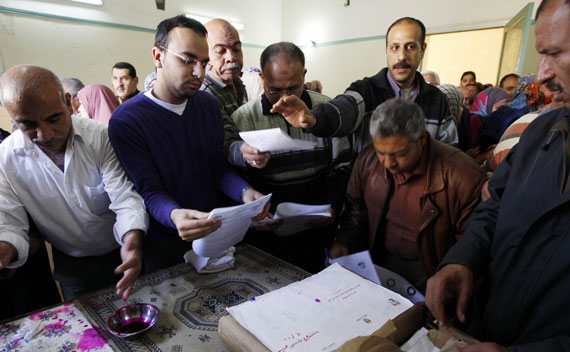Egyptian Politics: Back to the Future
More on:

Over the last three weeks as I have been out on the road with my book, The Struggle for Egypt: From Nasser to Tahrir Square, I have been asked over and over again, what will Egypt look like after the elections. The intellectually honest answer is, “I don’t know.” Egypt was a complex, ideologically rich, and contested political environment even before the uprising. It is now even more so and the power to predict among even the most sophisticated observers of the Egyptian scene is limited. Still, we have some inkling about what might be coming and oddly it looks similar to the distant past.
In August, Craig Charney of Charney Research conducted a poll on behalf of the International Peace Institute of 800 Egyptians. The results transported me to the 1940s and early 1950s. Keeping in mind that overall political trends may be more important than poll results, Craig’s findings are revealing:
1. The Wafd has strong favorability ratings (40 percent), based on name recognition, but only actually polls in the low teens;
2. The Muslim Brotherhood commands a solid 25 percent support;
3. The Tagammu, Ghad, and Nour parties have favorability ratings in the low teens;
4. Most of the new political parties, particularly those of a secular and liberal bent, only command single digit support;
5. There are a huge number of undecideds.
This breakdown with a strong Muslim Brotherhood, support for the Wafd—though it is a much diminished political force—and significant fragmentation on the liberal/secular end of the spectrum suggests that past patterns of Egyptian politics are re-emerging. History can’t tell us exactly what will happen in the future, but it does seem that time stopped on July 23, 1952 and started again on February 11, 2011. Of course, there are major differences between pre-coup and post-uprising Egypt. The remnants of the NDP and Nasserists who have favorability ratings of 20 and 24 percent respectively have no historical analogues in the 1940s and early 1950s. And, of course there is no monarchy and no foreign occupation, though some Egyptians look at USAID with similar disdain for the British civilizing mission in Egypt in the first half of the 20th century.
Nevertheless, if it really is back to the future in Egypt, the likelihood is that uncertainty, instability, and periodic outbursts of violence are likely to mark Egyptian politics along with weak parliaments, political infighting, and a revolving door prime ministry. Overall, not a pretty picture at all with negative consequences for the economy, the influence of the military, and the capacity to build a decent political order. At the same time, however, Egypt’s transition (to whatever it will transition to) was bound to be fraught and will likely take years so perhaps we should hold off on the clothing rending for now. The struggle for Egypt will likely continue for some time…
More on:
 Online Store
Online Store
